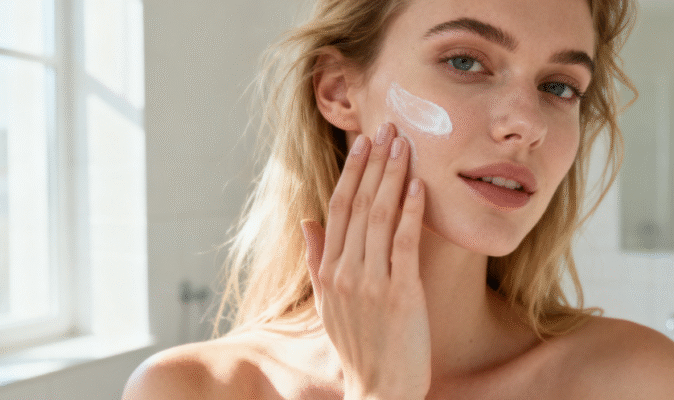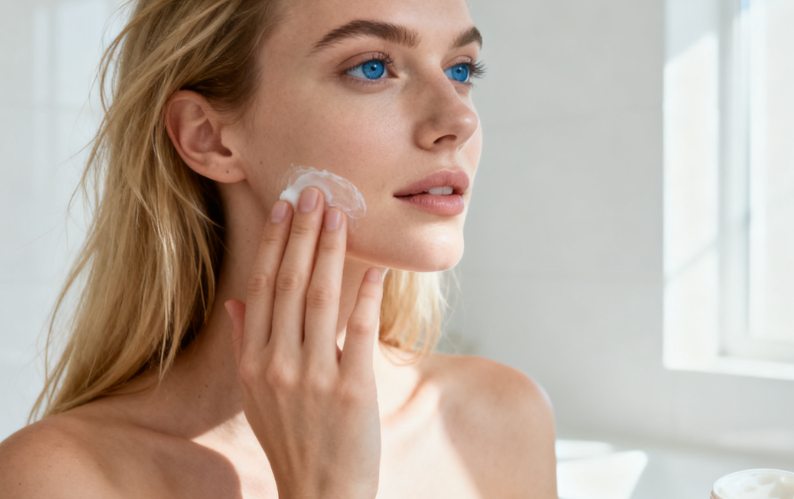In the Second Half of 2025, the global beauty market continued to exhibit the core characteristics of both stable growth and structural differentiation.
On the one hand, the development disparities among categories, channels, and regions continued to widen. On the other hand, regulatory upgrades and technological innovations were reshaping the underlying rules of the industry.
NIQ’s 2025 “State of Beauty” report pointed out that several trends in the cosmetics industry were further strengthened in the second half of this year.
1.The Acceleration of Global Cosmetic Ingredient Regulatory Policies
Of these, the most notable is the upgrading of regulatory policies. In the third quarter, a number of strict policies were intensively implemented, forcing enterprises in multiple regions to upgrade their compliance systems.
The restriction process of PFAS (per- and polyfluoroalkyl substances) in the European Union continued to accelerate. It is understood that the ECHA released an updated PFAS restriction proposal in August and clarified the review schedule.
Previously, the European Commission had made a restriction decision on PFHxA and related substances. Therefore, the United Kingdom and some EU member states quickly advanced the implementation. Waterproof and sweat-proof formulas in cosmetics, which often contained PFHxA in the past, became the key objects of supervision.

In addition, on May 13, 2025, the European Commission issued Regulation (EU) 2025/877, amending Regulation (EC) 1223/2009 on cosmetics, adding 21 chemical substances such as dimethyl phosphonate to the list of prohibited chemical substances in cosmetics in Annex II, and including trimethylbenzoyl diphenyl phosphine oxide (TPO) in the list of prohibited substances. In addition, on August 7, 2025, the European Commission specified that from September 1, 2025, cosmetics containing TPO could not be put on the EU market, and the inventory products already on the market could not continue to circulate.
In the US market, the MoCRA (Cosmetic Regulatory Modernization Act of 2022) is entering a crucial stage. Although the FDA has postponed the release of GMP rules and fragrance allergen labeling rules until 2026, basic compliance requirements such as adverse event reporting, facility registration, and product catalog filing have been fully implemented. The Personal Care Products Council (PCPC) of the United States pointed out that even though the act has not been officially implemented, after the direction and policy were determined, enterprises have already begun to transform towards mass customization in advance to avoid a decline in future competitiveness.
In addition, on June 26, 2025, three natural-source food colorants approved by the US Food and Drug Administration (FDA) officially took effect and were incorporated into 21 CFR Part 73. These three colorants are Galdieria blue extract, butterfly pea flower extract, and calcium phosphate.
On January 16, 2025, the United Kingdom released a draft regulation on restricting cosmetic chemicals, which is expected to take effect on September 30, 2025. The regulation will restrict the use of methyl salicylate in UK cosmetics.
On August 1, 2025, the Ministry of Food and Drug Safety (MFDS) of South Korea officially abolished the natural and organic cosmetics certification system. On August 14, the MFDS released the revised “Cosmetics Labeling Guidelines”, stating that enterprises no longer need to obtain government certification and can carry out product labeling and promotion as long as they meet the relevant standards and retain the relevant supporting materials.
China’s regulatory reforms are also being deepened simultaneously. The NMPA released 24 directional measures (draft for soliciting opinions) for cosmetic regulatory reforms and added five new toxicological methods in August. At the same time, China clarified the raw material innovation incentive policy through Document No. 12 in 2025, supporting local enterprises to develop new formulas for substitution.
2.The Regional Pattern is Gradually Being Rearranged, and Korean Cosmetics are Rising
This year, South Korea’s cosmetics exports achieved a historic breakthrough. According to data from the South Korean Ministry of Food and Drug Safety in July, the export volume from January to June 2025 reached 5.5 billion US dollars, a year-on-year increase of 14.8%, reaching an all-time high. It is understood that such a growth rate is very eye-catching globally, indicating the efforts of some South Korean brands in internationalization.
Among them, the export volume from January to April was 3.61 billion US dollars, surpassing the United States for the first time to rank second in the world, second only to France. Among them, the year-on-year growth rate of South Korean skincare products was 14.9%.
In addition to South Korea, the cosmetics exports of China and Thailand also showed double-digit growth in 2025. According to the statistical data of the China Chamber of Commerce for Import and Export of Medicines and Health Products, in the first half of 2025, the total export volume of Chinese cosmetics products was 3.59 billion US dollars, with a year-on-year growth rate of 10.5%. Among them, the export volume of cosmetics to Indonesia in the first half of 2025 increased by 92.6% year-on-year, the export volume to Russia increased by 43.6% compared with the same period last year, and the export volume to Malaysia increased by 24.8% in the first half of 2025.
The cosmetics industry in Thailand also achieved good results.
In contrast, the recovery rhythms of the main mature markets were significantly different. L’Oréal disclosed that the North Asian market decreased by 1.1% year-on-year in H1 2025, but the growth rate in the Chinese mainland rebounded to 3% in the second quarter.
Shiseido also repeatedly mentioned the profit challenges in China. The European and American markets were also under pressure.
The revenue of the Americas market of the Coty Group in the 2025 fiscal year decreased by 8%, and the Asia-Pacific market decreased by 8%. Against this background, Latin America, South Asia, the Middle East, and Africa maintained double-digit growth, becoming the key markets for L’Oréal and Estée Lauder to promote.
3.The Innovation of Raw Material Technology
Exosomes have continued to receive high attention, but the problems of compliance and verification have not been solved.
Academic research and industry monitoring show that currently, no exosome beauty products have been approved in the United States. The reason is that there are still disputes about the compliance of their sources and their long-term safety.
Against this background, brands have turned to more reliable technical paths, and mature active ingredient systems such as peptides, liposome delivery systems, and retinol substitutes have become the focus of research and development.
At the same time, “Well-ageing” and “cellular and molecular-level care” have become the core themes of research and development. The in-cosmetics Global/Asia exhibition listed them as key topics, and the Asian station is expected to showcase more than 100 innovative raw materials, covering new ingredients such as collagen dipeptide CP and fruit acid peptides.
Leecosmetic: Using raw materials from internationally renowned companies
Leecosmetic is a leading cosmetics manufacturer. It provides high – quality cosmetics products at very competitive prices and with low minimum order quantities.
We offer a range of services, such as private label cosmetics manufacturing, OEM/ODM manufacturing, and provide a complete product supply solution for small and medium – sized cosmetics brands.
As a fast – growing private label cosmetics manufacturer, Leecosmetic has been using raw materials from internationally renowned companies in a safe and efficient manner.
Contact: https://leecosmetic.com/contactus/
4.The Localization of the Supply Chain is Increasingly Evident
Procter & Gamble announced an additional investment of 150 million US dollars in the Oral-B base in Iowa, the United States, to build a new 150,000-square-foot production facility and received state and local tax incentives. Procter & Gamble’s move is of landmark significance and is also the result of the policies promoted by this US government.
In addition, this layout continues the production of beauty products in the United States. Moreover, for the company, it can also shorten the supply chain, reduce tariff costs and geopolitical risks, and enhance its competitiveness in the North American market.
This trend is not unique. L’Oréal is expanding its skincare production line in Southeast Asia, and Estée Lauder is accelerating the construction of its supply chain base in the Yangtze River Delta in China, all aiming to be closer to the core consumer market through local production. Industry data shows that the investment in the localization of the supply chain of global beauty enterprises increased by 18% year-on-year in 2025.
The brands under the Kao Group, such as Freeplus, have been steadily promoting the full-link localization upgrade since 2024 and have set up their global headquarters in Shanghai, China. In 2025, Kao will accelerate the localization of the products of the two brands, Freeplus and Curél.
In 2025, the Beiersdorf Group invested 31.42 million US dollars in Nivea (Shanghai) Co., Ltd. At the same time, the Qingpu factory in Shanghai will undergo a new round of intelligent production line upgrades to improve the level of manufacturing automation and flexibility.
5.The Integration of Content E-commerce and Offline Experience
Content e-commerce represented by TikTok Shop continues to explode.
The Momentum Works×Tabcut report shows that the GMV of the global beauty content e-commerce in H1 2025 reached 26.2 billion US dollars. Among them, the US market was 5.8 billion US dollars, a year-on-year surge of 91%, and Indonesia surpassed the United States to become the largest market.
It is worth noting that the proportion of live e-commerce GMV in the US market increased to 14%, and the link efficiency of short-video planting – live conversion continued to be optimized.
Due to more and more consumers only seeking cost-effectiveness/dupe culture, this has deeply influenced the strategies of mid-to-high-end brands. To cater to the market trend, many high-end brands have launched mini-sets.
Offline experiences are characterized by immersion and entertainment. Sephora launched the first stop of its SEPHORiA global tour in Shanghai, gathering nearly 50 high-end brands to create an immersive experience event. Ulta entered the Mexican market for the first time, designing store scenes with the core positioning of “beauty + entertainment”.
6. Category Structure Upgrade
In the second half of 2025, the perfume category continued its strong growth momentum in the market.
Data from Circana shows that in H1 2025, sales of premium perfumes in the U.S. increased by 6% year-on-year. Coty Group’s financial report confirmed this trend: in its 2025 fiscal year, ultra-premium perfumes grew by 9%, mass-market perfumes by 8%, and premium perfumes by 2%. Among them, high-concentration perfumes (with 15%-25% fragrance oil content) and mini-sized perfumes (5-10ml) recorded the most significant growth.
Additionally, perfume sales in China’s luxury goods market saw remarkable growth. Cosmetics sales maintained a steady 5% increase, with perfume demand rebounding notably.
Estée Lauder Group’s net sales from its perfume business reached RMB 17.877 billion in the 2025 fiscal year, an increase of approximately RMB 30 million compared to the 2024 fiscal year. In the fourth quarter of the 2025 fiscal year, the perfume business achieved a 4% growth.
The hair care category remained robust. In H1 2025, sales of premium hair care products in the U.S. rose by 6%, with scalp care and repairing styling products leading the growth. In the skincare segment, sales of mass-market skincare increased by 4%; although sales of premium skincare slightly decreased by 1%, its sales volume rose against the trend. The global scalp health care market size is expected to reach USD 32 billion in 2025, among which products with microbiome-regulating functions account for a rapidly increasing share, reaching 28%.
These trends all reflect consumers’ growing focus on product efficacy—products with clear single functions and reasonable ingredient dosages are more favored. In the color cosmetics category, lip gloss/lip liner and lash products grew significantly, while facial cosmetics are still in a period of adjustment. According to Shopee data, in the second half of 2025, lip gloss and lipstick products were more preferred across all its regional sites; both glossy lip glosses and matte lipsticks held substantial market demand. Meanwhile, sales of blushes and contour palettes also grew rapidly on Shopee’s Latin American and Southeast Asian sites.
Conclusion: Seeking Certain Growth amidst Differentiation
In the cosmetics market in 2025, amidst the multiple changes in regulation, technology, channels, and regions, it not only presented the complexity of structural differentiation but also bred certain growth opportunities.
For brands, they need to ensure the compliance of their product formulas and deeply research and develop products with core competitiveness. In addition, as social media gradually replaces traditional media, coordinating marketing channels with production and manufacturing will more powerfully build competitiveness.

